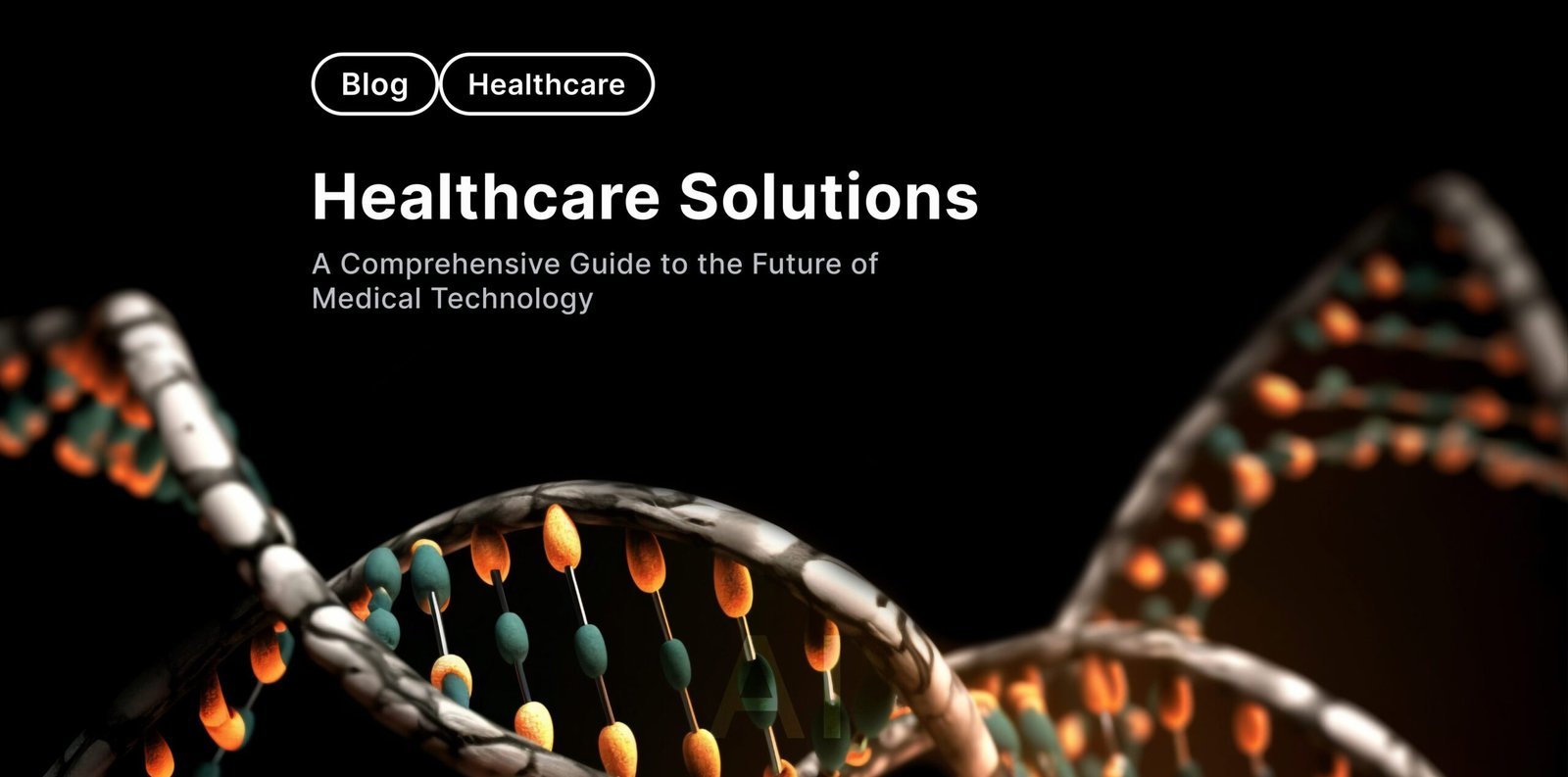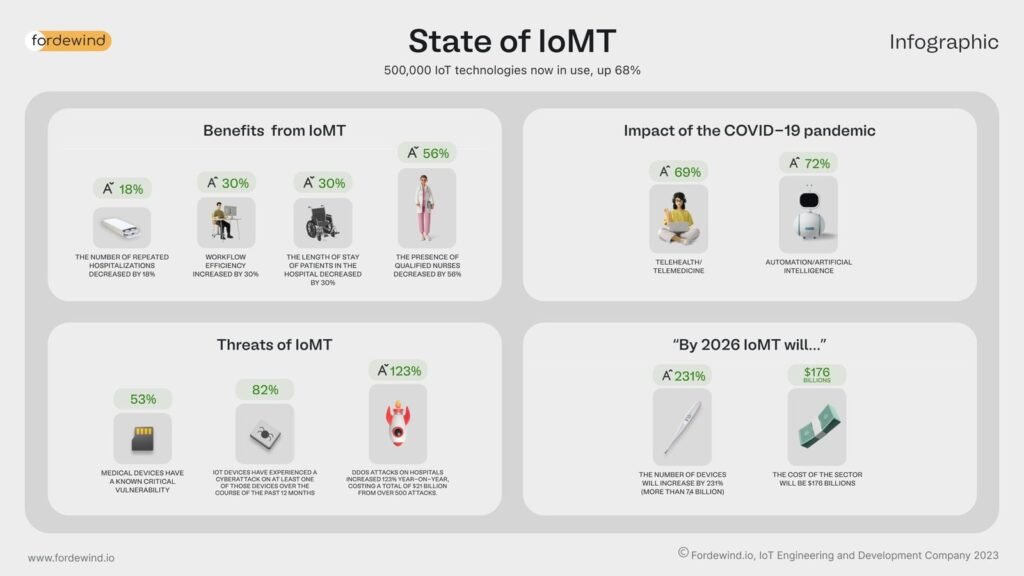✆ + 1-646-235-9076 ⏱ Mon - Fri: 24h/day
Healthcare Solutions: A Comprehensive Guide to the Future of Medical Technology


The Digital Revolution in Healthcare Solutions
Healthcare is undergoing a dramatic shift as digital technologies transform how care is delivered, managed, and experienced. From IoT-powered devices that monitor patients in real-time to advanced telemedicine platforms that bring healthcare to your fingertips, the integration of technology is paving the way for more efficient, personalized, and accessible medical care. This guide explores the essential innovations driving this revolution, offering a deep dive into the tools and trends shaping the future of healthcare. Whether you’re a healthcare professional, a technology enthusiast, or simply curious about the future of medicine, this resource provides the insights you need to navigate and thrive in the evolving landscape of healthcare.
Understanding the Modern Healthcare Landscape
IoT in Healthcare: Transforming Medical Technologies
The Internet of Medical Things (IoMT) is revolutionizing healthcare by integrating IoT technology into medical devices and processes. IoMT includes innovations like “intelligent pills” that monitor medication levels, smart medical devices that improve hospital efficiency, and wearable technology such as smart contact lenses for monitoring conditions like diabetes. These technologies enable real-time monitoring, enhance remote care, and optimize resource management in healthcare settings. However, the success of IoMT relies on robust, consistent connectivity—especially where uninterrupted data transmission is essential.


IoT empowers healthcare providers to offer more personalized care and achieve better outcomes for patients. IoT-embedded healthcare technologies and platforms enable healthcare providers to offer remote monitoring, predictive maintenance, and more.


Key IoT-Embedded Healthcare Platforms and Their Benefits:
- Remote Patient Monitoring (RPM): IoT-enabled RPM systems allow patients to receive medical care at home. RPM allows healthcare providers to monitor patients’ health in real-time, thereby detecting any potential health problems before they become serious. This can lead to better health outcomes for patients and reduce healthcare costs. Our advanced RPM system with excellent design effectively tracks patients with chronic conditions such as diabetes and hypertension.
- Telemedicine: IoT-embedded healthcare technology enables telemedicine. This means that healthcare providers can offer medical consultations remotely. Telemedicine allows healthcare providers to reach patients who are in remote locations, have limited mobility, or have other barriers to receiving medical care. We have platforms with features such as video conferencing, secure messaging, and file sharing in which a patient’s mobile application can collect BLE data from external medical devices.
- Electronic Health Records (EHRs): IoT-embedded platforms integrate with EHR systems, allowing seamless collection and electronic storage of patient data. This enhances access to critical health information, enabling healthcare providers to make faster and more informed decisions. Our EHR platform is a comprehensive health record system with aims to optimize healthcare and improve patient care.
The integration of IoT technology in healthcare, particularly through IoT cloud solutions, is transforming patient care and operational efficiency. IoT devices and sensors collect real-time data from patients and equipment, which is transmitted to the cloud for analysis.
IoT-embedded healthcare technologies and platforms offer a wide range of benefits to healthcare providers and patients alike. These technologies can improve patient outcomes, reduce healthcare costs, and offer personalized care. However, healthcare providers need to address the challenges of data security, data overload, technical issues, and patient education to ensure the successful adoption of these technologies. With proper planning and implementation, IoT-embedded healthcare technologies can revolutionize healthcare and improve the lives of patients.
Key IoT Healthcare Trends Shaping the Future
Innovative Healthcare Solutions and Future Trends
As we navigate an era dominated by artificial intelligence, data analytics, and rapidly advancing connectivity, the significance of the Internet of Things (IoT) as a transformative technology in healthcare is undeniable. IoT is central to many innovations, including the rise of machine learning and advanced data-driven healthcare solutions. To stay competitive and forward-thinking, businesses must not only adapt but creatively integrate these technologies. Vigilance in observing emerging trends will allow enterprises to maximize the potential of IoT in healthcare.
Let’s delve into the future of IoT technology and the trends shaping global markets in 2024. Here are some of the key healthcare IoT trends that we should keep a lookout for:


Trend #1: AIoT – Artificial Intelligence & IoT Technology
The combination of Artificial Intelligence (AI) and IoT is a powerful advancement in healthcare. AI enhances IoT systems by analyzing the large volumes of data generated by IoT sensors, leading to smarter, more efficient healthcare processes. In return, IoT benefits from AI’s predictive capabilities, enabling real-time decision-making in critical scenarios such as predictive maintenance of medical equipment and early diagnosis in patient care.
Trend #2: Edge Computing – Low Latency & Security
Edge computing is reshaping the future of healthcare IoT by processing data closer to its source, such as within hospitals or near patients’ homes. This reduces latency, allowing real-time applications like remote surgeries or critical health monitoring to operate more efficiently. Additionally, edge computing enhances the security of IoT systems by minimizing the risks of transmitting sensitive data across long networks. With the rise of AI-powered cyber-attacks in 2024, securing IoT devices is essential, making edge computing a critical element in safeguarding patient privacy and healthcare operations.
Trend #3: Wearable IoT Technology
Wearable IoT devices, such as smartwatches, earbuds, and AR/VR headsets, are gaining momentum in healthcare. These devices continuously track and monitor vital health signs, providing critical data in real-time. For patients with chronic illnesses, wearables can detect anomalies early, assisting in timely intervention during emergencies. The future of remote patient monitoring (RPM) will increasingly rely on such wearables, further enhancing personalized care and patient outcomes.
For a comprehensive exploration of these emerging technologies and future trends, explore our Healthcare IT Ebook. It provides valuable insights into the future of healthcare, including the rapid growth of IoT devices, advancements in Remote Patient Monitoring, and the evolution of Electronic Health Records. Discover how IoT and AI are transforming patient care while highlighting the critical importance of cybersecurity in this connected ecosystem.
Conclusion: IoT-Driven Future of Healthcare
The integration of IoT in healthcare is not just a trend; it’s a fundamental shift in how we approach patient care and health management. From remote monitoring to AI-powered diagnostics, IoT is enabling more personalized, efficient, and accessible healthcare services.
As we look to the future, it’s clear that IoT will continue to play a pivotal role in shaping the healthcare landscape. By embracing these technologies and addressing the associated challenges, healthcare providers can deliver better outcomes, improve patient experiences, and ultimately, save more lives.
To stay ahead in this rapidly evolving field, healthcare organizations must invest in IoT technologies, prioritize cybersecurity, and foster a culture of innovation. The future of healthcare is connected, intelligent, and patient-centric – and it’s being built on the foundation of IoT.